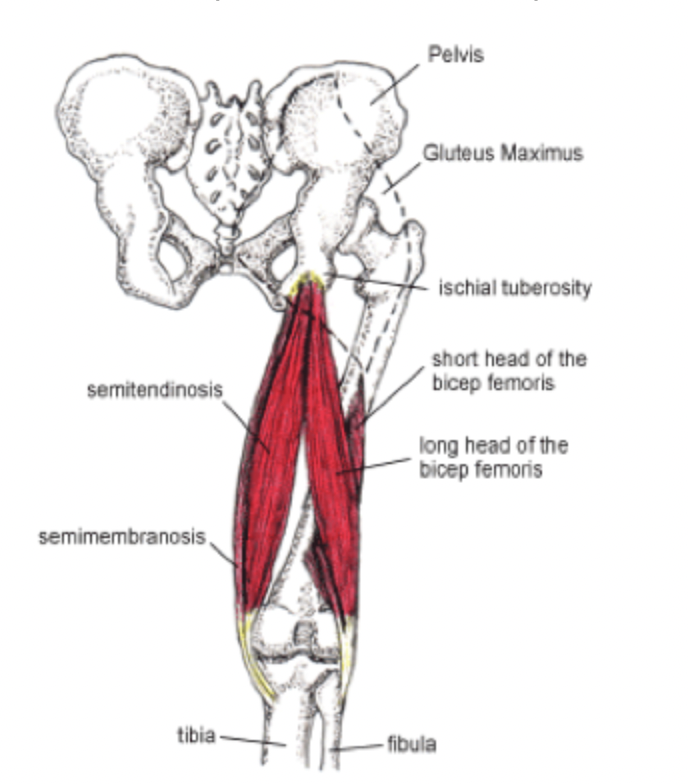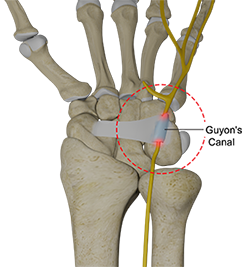The Meniscus: A KNEEdy Piece of Cartilage
- golabiromtin
- Jun 23
- 4 min read
By Romtin G.
Introduction
I’m gonna tell you a story that you’ve probably heard before, and I’d bet my knees that you know what I’m talking about. Honestly, if I’m wrong, my knees suck right now and it would be better if I could get a new pair, but anyways! Here’s the story: an athlete goes down clutching their knee, moments later, the diagnosis comes in as a torn meniscus. But what does that really mean? Why is it such a common injury in sports, from soccer and basketball to skiing and wrestling? And more importantly, how does the anatomy of our knees make this structure so perfectly suited for our body, yet a common casualty?
In this article, I’ll be going into the biomechanics, anatomy, and biology behind meniscus tears, tearing (pun intended) down how and why they happen, what sports put athletes at greatest risk, and what science tells us about healing and recovery.
Meniscus Anatomy: Shock Absorber
The meniscus is a C-shaped piece of fibrocartilage located between the femur (thighbone) and tibia (shinbone) in the knee joint. Each knee has two menisci: the medial meniscus (the inner side of the knee) and the lateral meniscus (the outer side of the knee).

They function as shock absorbers, stabilizers, and load distributors. They’re basically like the knee’s natural padding, as they protect the bone ends and evenly spread out the force every time you walk, run, jump, or pivot!
Menisci are made of type I collagen fibers, arranged in a pretty complex orientation. They have a circular/circumferential arrangement (hoop stresses) to resist compression and radially to resist tearing. This internal structure is key to their biomechanical strength, but it also becomes a critical point of vulnerability under certain loads.
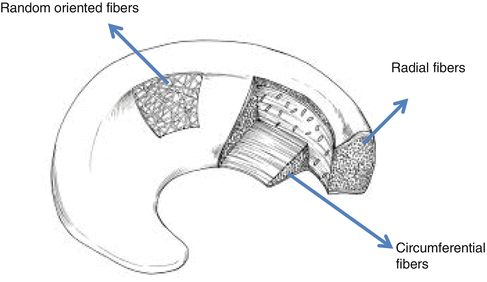
How Meniscus Tears Happen
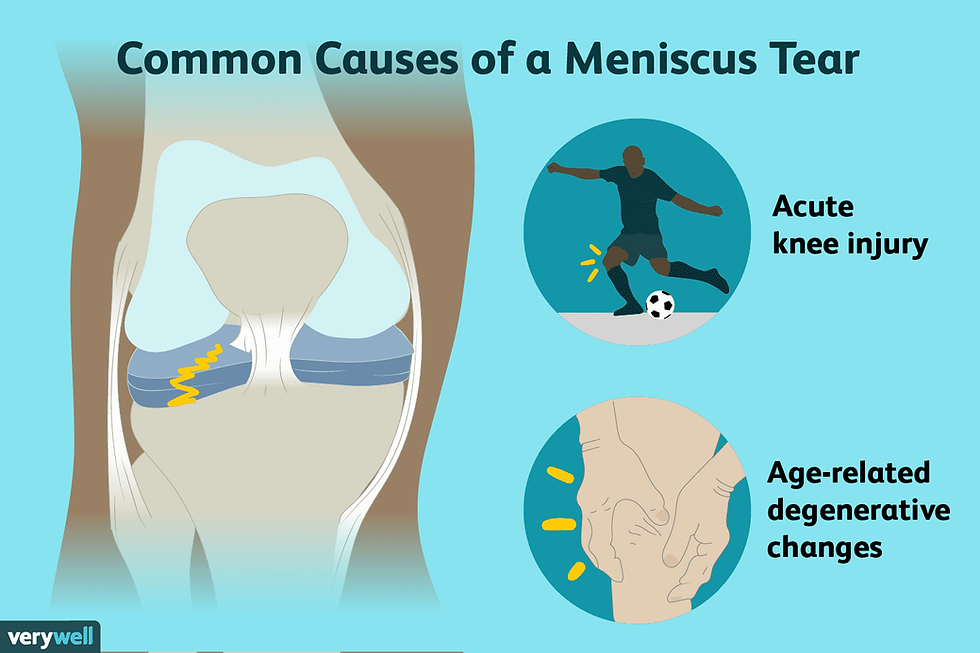
The most common cause of a meniscus tear is a twisting motion on a flexed knee while the foot is planted. Imagine a soccer player pivoting to change direction while dribbling or a basketball player cutting to the basket—these movements are what create rotational forces on the knee joint.
Let’s break down the forces:
Compression from body weight pushes the femur down on the tibia
Torsion (twisting) adds a shear (parallel) force across the meniscus
Flexion reduces the joint space, making the meniscus more vulnerable
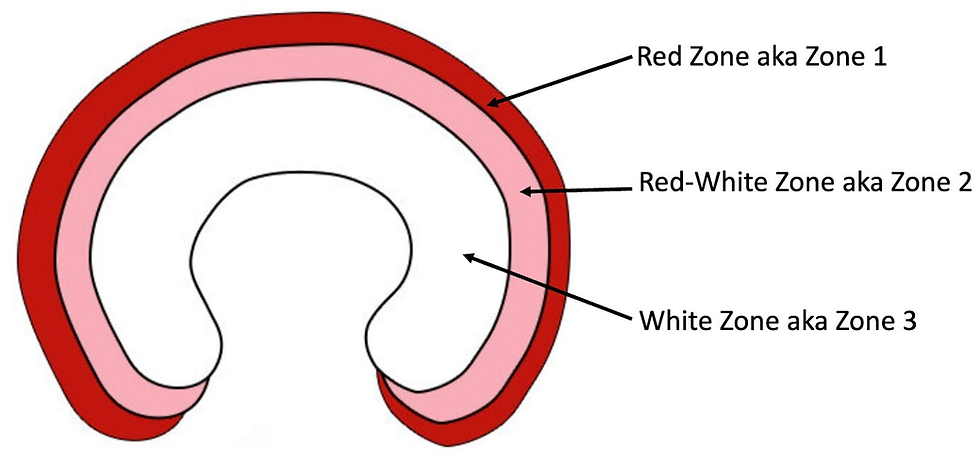
When the load exceeds the tensile strength of the meniscus fibers (especially if the motion is sudden or violent), the fibrocartilage can split, often along the posterior horn (back end), which bears most of the pressure.
However, not all meniscus tears are traumatic. In older athletes or those with prior knee issues, degenerative tears can occur. Here, the collagen network gradually weakens due to age-related changes, reduced hydration, and microtrauma, making it easier for a tear to occur even during everyday motions like squatting or standing up awkwardly.
Zones of Healing: Why Meniscus Tears Don’t Always Heal
One of the most fascinating aspects of meniscus biology is its vascularity, or lack thereof. The meniscus is divided into three vascular zones:
Red-red zone (outer third): well-supplied with blood, capable of healing naturally
Red-white zone (middle third): some blood supply, partial healing potential
White-white zone (inner third): no direct blood supply, minimal healing
Tears in the white-white zone pretty much always require surgical intervention (like partial meniscectomy, which involves the removal of the torn part of the meniscus) because they just won’t heal on their own! Blood is the holy grail of healing and brings the cells, nutrients, and oxygen needed for your tissue to repair itself. Without it, the meniscus remains broken, which is bound to cause you problems if not fixed!
Sports and Meniscus Tears: High-Risk Activities
Certain sports dramatically increase the risk of meniscus injuries due to repetitive loading, pivoting, and high-impact movements. Here are the top culprits
Soccer: frequent twisting, cutting, and contact
Basketball: jumping and landing awkwardly, quick direction changes
Football: tackling and forced knee rotation
Wrestling/Judo: hyperflexion combined with torque
Skiing: twisting falls with the foot locked in a boot
Athletes with muscle imbalances, lax ligaments, or prior ACL injuries are at even higher risk. Fun fact: Meniscus tears often accompany ACL Tears in young athletes, because the forces that cause one injury can lead to the other, and since adolescents may have certain imbalances (muscular, joint, skeletal, etc.) due to puberty.
Recovery and Regeneration
Healing depends heavily on tear location, activity level, and treatment. For surgery, you can get a meniscus repair (stitching the tear back together; very ideal for red-red zone tears), partial meniscectomy, or a meniscus transplantation in severe cases (especially in younger patients, since their bodies can integrate a foreign tissue much more successfully). Arthroscopic surgery is often used as it’s minimally invasive and thus significantly reduces recovery time (read my previous article).

Post-surgery or conservative treatment involves reducing swelling and pain (never forget RICE!); restoring range of motion; and strengthening the quads, hamstrings, and glutes to stabilize the knee.
Some biological therapies (like PRP or stem cells; read this article) are being explored to enhance healing, especially in avascular zones like the white-white zone. There are also tissue-engineered scaffolds that are under development to replace or repair damaged meniscus tissue with compatible materials that support cell growth. If these things interest you, bioengineering, biomedical engineering, or any related fields would be great to pursue, whether that’s for your own research or through formal education.
Conclusion: Why the Meniscus Matters
The meniscus may look like a simple wedge of cartilage, but it’s a powerhouse (like the mitochondria for a cell) and a puzzle at the same time. In the world of sports, it’s both crucial and vulnerable, as it’s a structure that protects the knee but pays the price when athletes push the limits of movement. Understanding how a tear happens and why some heal while others don’t offers awesome insights into injury and recovery, essential for all audiences: an athlete, a coach, or anyone interested in how the body works. In the end, the story of the meniscus is a story of balance.
Sources
